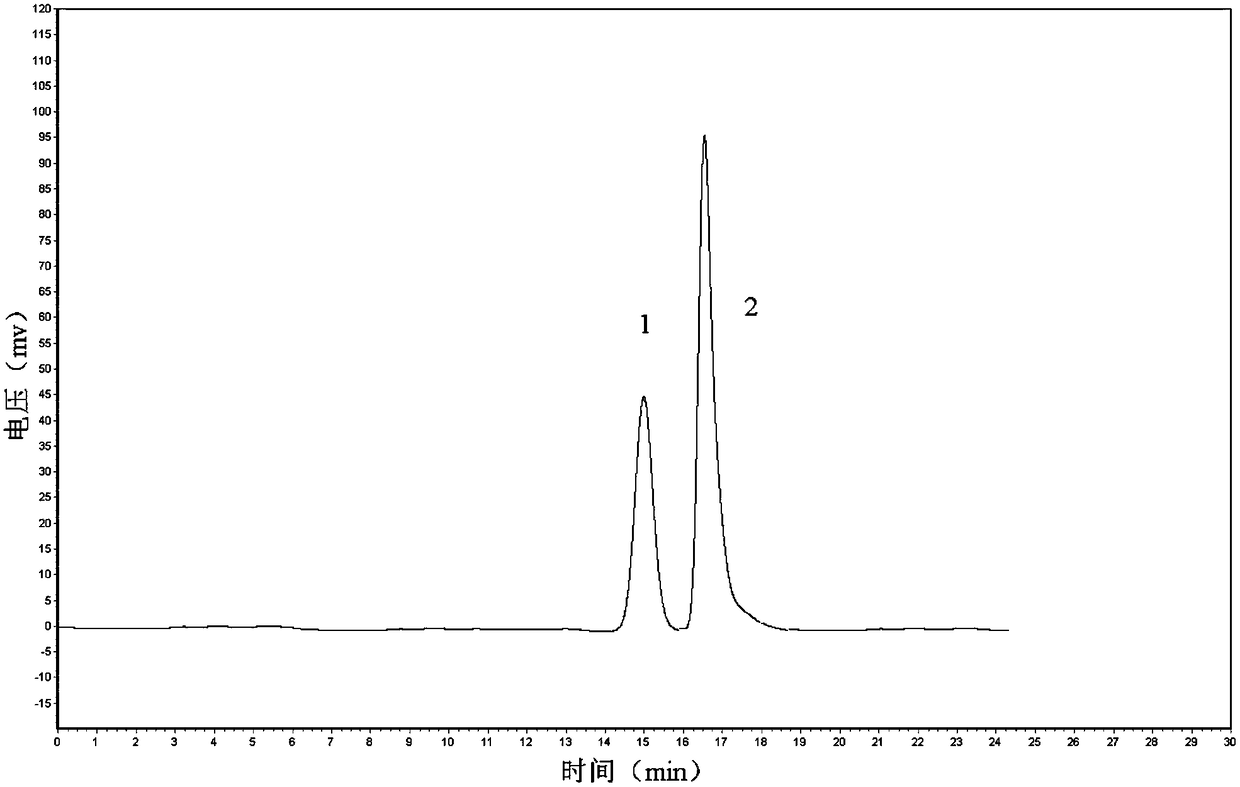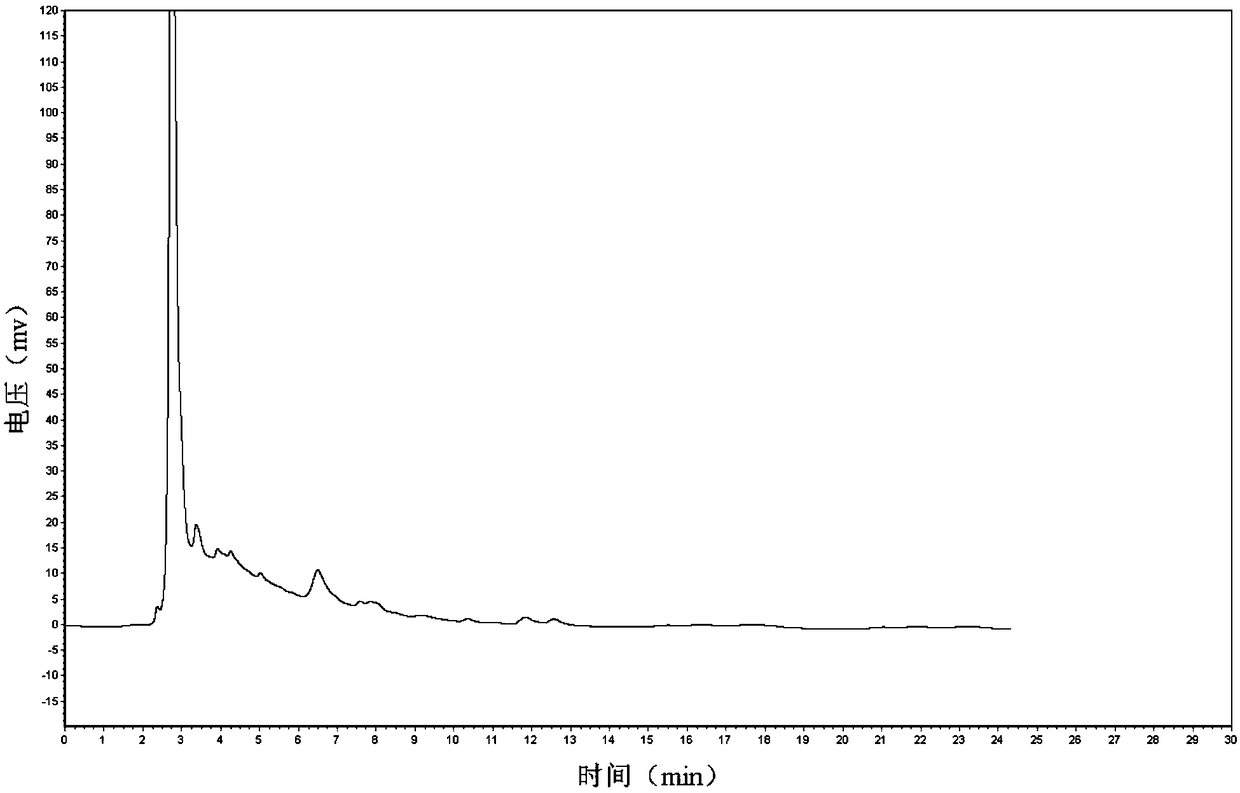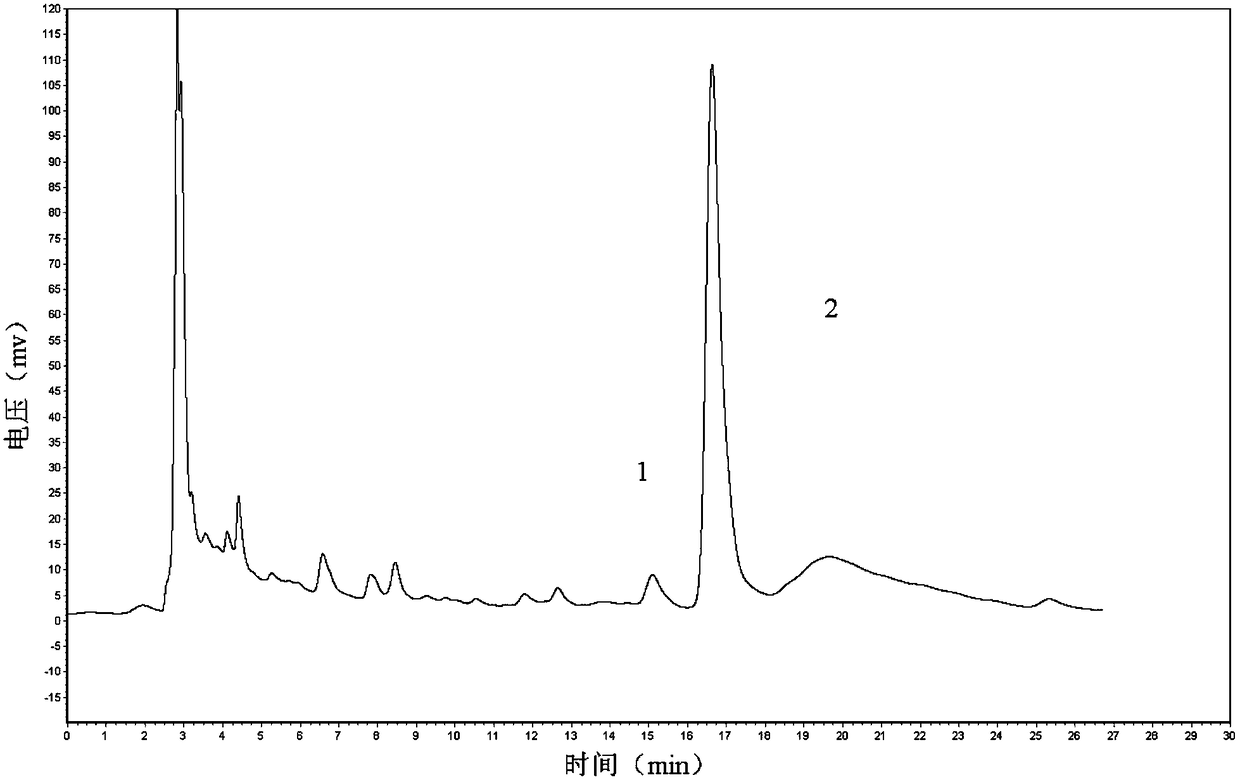Preparation method of catechin nanoparticles reducing aflatoxin bioavailability
A technology of aflatoxin and catechin is applied in the field of preparation of catechin nanoparticles, which can solve the impact, and at the same time, there are also research reports and problems such as reducing the bioavailability of anti-aflatoxin
- Summary
- Abstract
- Description
- Claims
- Application Information
AI Technical Summary
Problems solved by technology
Method used
Image
Examples
Embodiment 1
[0068] Embodiment 1, a kind of preparation method of the catechin nanoparticle that can reduce aflatoxin bioavailability, carries out following steps successively:
[0069] 1) Add 0.5g of chitosan to a 500mL round-bottomed flask, add water to make the volume to 100mL, stir magnetically at 25°C for 30 minutes, rotate at 900r / min, and adjust the pH to 4.5;
[0070] 2), accurately preparing 20 mL of sodium polyphosphate solution with a mass concentration of 1.5%, and using the sodium polyphosphate solution to prepare catechin-sodium polyphosphate solution with a catechin concentration of 60 mg / mL;
[0071] 3), the catechin--sodium polyphosphate solution obtained in step 2) is all slowly dripped into the round bottom flask in 1) drop by drop, and the drop time is 10 minutes (the drop rate is about 40 drops / minute);
[0072]The obtained reaction system was continuously stirred at 25° C. for 50 minutes (rotating speed: 400 r / min) to obtain a catechin nanoparticle suspension.
Embodiment 2
[0073] Embodiment 2, a kind of preparation method of the catechin nanoparticle that can reduce the bioavailability of aflatoxin, carries out the following steps successively:
[0074] 1) Add 0.2g of chitosan to a 500mL round-bottomed flask, add water to make up to 100mL, stir magnetically at 25°C for 30 minutes, rotate at 500r / min, and adjust the pH to 3.0;
[0075] 2), accurately preparing 20 mL of sodium polyphosphate solution with a mass concentration of 1.0%, and using the sodium polyphosphate solution to prepare catechin-sodium polyphosphate solution with a catechin concentration of 60 mg / mL;
[0076] 3), the catechin-sodium polyphosphate solution obtained in step 2) is all slowly added dropwise evenly to the round bottom flask in 1), and the dropping time is 10 minutes;
[0077] The obtained reaction system was continuously stirred at 25° C. for 10 minutes to obtain a catechin nanoparticle suspension.
Embodiment 3
[0078] Embodiment 3, a kind of preparation method of the catechin nanoparticle that can reduce the bioavailability of aflatoxin, carries out the following steps successively:
[0079] 1) Add 1.5g of chitosan to a 500mL round-bottomed flask, add water to make the volume to 100mL, and perform magnetic stirring at 25°C for 60 minutes at a speed of 1500r / min, while adjusting the pH to 7.0;
[0080] 2), accurately preparing 20 mL of sodium polyphosphate solution with a mass concentration of 2.5%, and then preparing a catechin-sodium polyphosphate solution with a catechin concentration of 60 mg / mL with the sodium polyphosphate solution;
[0081] 3), the catechin-sodium polyphosphate solution obtained in step 2) is all slowly added dropwise evenly to the round bottom flask in 1), and the dropping time is 5 minutes;
[0082] The obtained reaction system was continuously stirred at 25° C. for 80 minutes to obtain a suspension of catechin nanoparticles.
[0083] Experiment 1. Detection...
PUM
| Property | Measurement | Unit |
|---|---|---|
| recovery rate | aaaaa | aaaaa |
| recovery rate | aaaaa | aaaaa |
| encapsulation rate | aaaaa | aaaaa |
Abstract
Description
Claims
Application Information
 Login to View More
Login to View More - R&D
- Intellectual Property
- Life Sciences
- Materials
- Tech Scout
- Unparalleled Data Quality
- Higher Quality Content
- 60% Fewer Hallucinations
Browse by: Latest US Patents, China's latest patents, Technical Efficacy Thesaurus, Application Domain, Technology Topic, Popular Technical Reports.
© 2025 PatSnap. All rights reserved.Legal|Privacy policy|Modern Slavery Act Transparency Statement|Sitemap|About US| Contact US: help@patsnap.com



